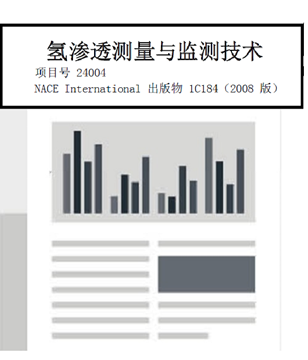Search
Standards
View as
Sort by
Display
per page
NACE Publication 10A392-2006 "Effectiveness of Cathodic Protection on Thermally Insulated Underground Metallic Structures
Product Number:
24156-SG
Publication Date:
2006
$179.00
NACE Publication 10A392-2018 "Effectiveness of Cathodic Protection on Thermally Insulated Underground Metallic Structures"
Product Number:
24156-2018
$109.00
NACE Publication 10B189-2014-SG, "Direct Current Operated Rail Transit Stray Current Mitigation"
Product Number:
24255-SG
Publication Date:
2014
$109.00
NACE Publication 11100-2018, Reference Electrodes for Atmospherically Exposed Reinforced Concrete Structures
Product Number:
24204-SG
Publication Date:
2018
$109.00
NACE Publication 11106-2006-SG, Monitoring and Adjustment of Cooling Water Treatment Operating Parameters
Product Number:
24229-SG
ISBN:
NACE Pub 11106
$109.00
NACE Publication 11114-2014-SG, "A State-of-the-Art Report on the Internal Corrosion of Residential Water Heating Systems"
Product Number:
24257-SG
Publication Date:
2014
$109.00
NACE Publication 11206-2006-SG, Biocide Monitoring and Control in Cooling Towers
Product Number:
24230-SG
ISBN:
NACE Pub 11206
$109.00
NACE Publication 14C296-1996-SG, A State-of-the-Art Report on Protective Coatings for Mitigating Corrosion Under Insulation on Rail Tank Cars
Product Number:
24191-SG
ISBN:
14C296 State of
$109.00
NACE Publication 1C184-2008-SG, Hydrogen Permeation Measurement and Monitoring Technology (2008 Edition)
Product Number:
24002-SG
ISBN:
1C184 Monitorin
Publication Date:
2008
$109.00
NACE Publication 1C187-2005-SG , Use of Galvanic Probe Corrosion Monitors in Oil and Gas Drilling and Production Operations (2005 Edition)
Product Number:
24003-SG
ISBN:
1C187 Use of Ga
Publication Date:
2005
$109.00
NACE Publication 1D177-2009-SG, Monitoring Techniques and Corrosion Control for Drill Pipe, Casing, and other Steel Components in Contact with Drilling Fluids
Product Number:
24006-SG
Publication Date:
2009
$109.00













